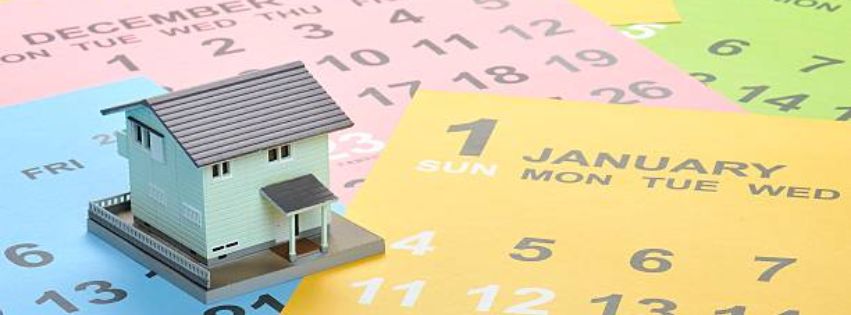In the dynamic world of real estate, one term that often pops up—especially during market transitions—is the lease option. Whether the market is rising or falling, lease options tend to make a resurgence, offering a unique opportunity for both buyers and sellers. But what exactly is a lease option, and how does it work? In this post, we'll dive deep into the process, benefits, and potential pitfalls of lease options, sharing insights gained from over two decades of experience.
What is a Lease Option?
A lease option is essentially an agreement between a tenant and a property owner that gives the tenant the option to purchase the property at a predetermined price at a later date. While the terms of these agreements can vary widely—no two lease options are exactly alike—they are all legal and valid as long as both parties agree to the terms.
At its core, a lease option is a flexible arrangement that can benefit both parties. For the buyer, it offers the chance to secure a home before they are fully ready to buy. For the seller, it provides an additional revenue stream and a committed potential buyer.
The Three-Part Process
Over the years, I’ve worked on many lease option deals, each requiring transparency and clear communication to avoid future misunderstandings. I’ve refined this process into three key components:
The Lease Option Agreement
This is the initial agreement where the tenant (potential buyer) pays a fee—typically 5% of the property’s purchase price—to secure the exclusive right to buy the property during the agreed-upon option period. During this time, the seller cannot sell the property to anyone else, and the tenant is not obligated to buy. However, it's crucial to remember that the option fee is non-refundable if the buyer decides not to exercise the option.
For example, instead of a typical 20% down payment when purchasing a property outright, lease option agreements typically require around 5% upfront. This fee secures the tenant's right to purchase the home at a future date, often within two years.The Residential Purchase Agreement
This agreement fixes the future purchase price of the property. Unlike other arrangements where the final price might be determined by a future appraisal, a lease option sets the price upfront. This avoids disputes over market value or appraisals, which are common reasons for lawsuits in real estate transactions.
By agreeing on a price at the outset, both buyer and seller have certainty. If the market value increases beyond the agreed price, the buyer benefits from the appreciation. Conversely, if the value decreases, the buyer can choose not to exercise the option, though they will forfeit the option fee.The Lease Agreement
This is essentially a standard rental contract. It outlines the rental terms and how long the tenant will occupy the property. In most cases, the lease term matches the option period—typically two years. The monthly rent may include a portion credited towards the future purchase price, helping the tenant accumulate equity during the lease period.
For instance, let’s say the monthly rent is $4,000, with $3,000 as rent and $1,000 credited towards the option fee. Over two years, the tenant would have accumulated an additional $24,000 towards the purchase, bringing them closer to their goal of home ownership.
Why Opt for a Lease Option?
Lease options are often chosen when buyers face short-term hurdles such as bad credit or uncertain financial futures. By opting for a two-year agreement, they can improve their financial standing and prepare to buy the property when the option period ends.
For example, someone graduating from medical school and starting an internship might foresee a significant income increase in the near future. A lease option allows them to live in their desired home now, while securing the right to purchase it once they’re more financially stable.
Similarly, if you’re unsure of the housing market’s future direction, a lease option offers the chance to "lock in" today’s price, protecting you against potential market increases. In areas where property values are rapidly rising, this can result in substantial savings over time.
The Risks
While lease options can be highly beneficial, they aren’t without risks. One of the biggest downsides is the potential for the tenant not to exercise the option. If the tenant decides not to buy, the option fee is forfeited, which can leave a bad taste in the buyer’s mouth. However, knowing this upfront is essential to making an informed decision.
Additionally, lease options sometimes end in legal disputes. To avoid this, transparency is crucial. From clearly stating the future purchase price to outlining every term in both the lease and purchase agreements, clarity helps ensure a smooth transaction.
A Real-Life Example
Let’s take a practical example: a property in Rancho Cordova listed at $700,000. Under a lease option agreement, the buyer puts down 5% ($35,000) as the option fee and agrees to a rent of $4,000 per month. Of this, $1,000 is credited towards the future purchase price. Over two years, the buyer accumulates $59,000 in option fees and credits, which can be applied towards the down payment when they’re ready to buy.
If the market value of the property increases by 10% over the next two years, the home would be worth $770,000. However, under the lease option agreement, the buyer would still only pay $700,000, securing $70,000 in equity.
Is a Lease Option Right for You?
Lease options aren’t for everyone. They’re best suited for those who see potential for financial improvement in the near future or for those unsure about committing to a purchase in a volatile market. It’s crucial to fully understand the terms and risks involved before entering into a lease option agreement.
If you have any questions or would like to explore how a lease option could work for you, feel free to give me a call at 916-225-7777. I'm always happy to help!


